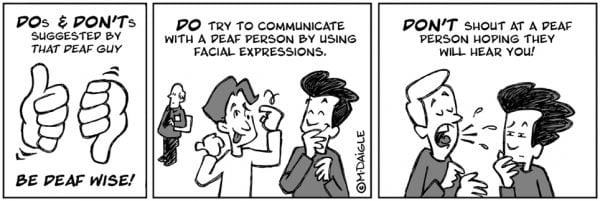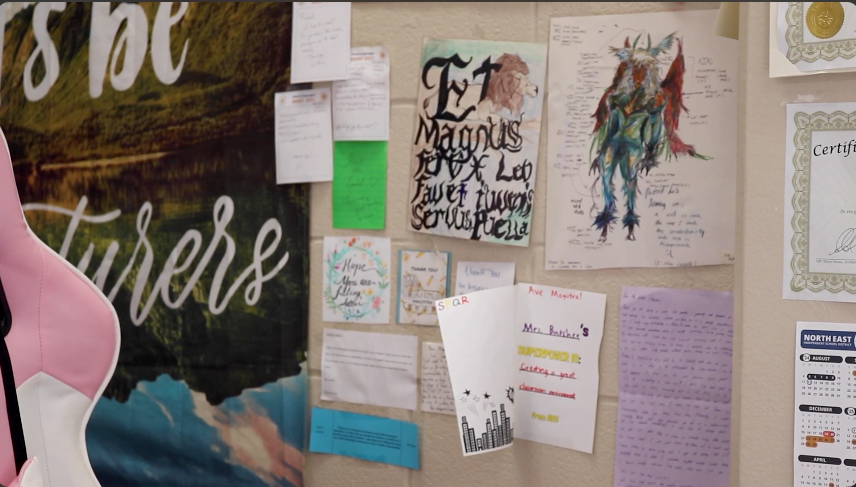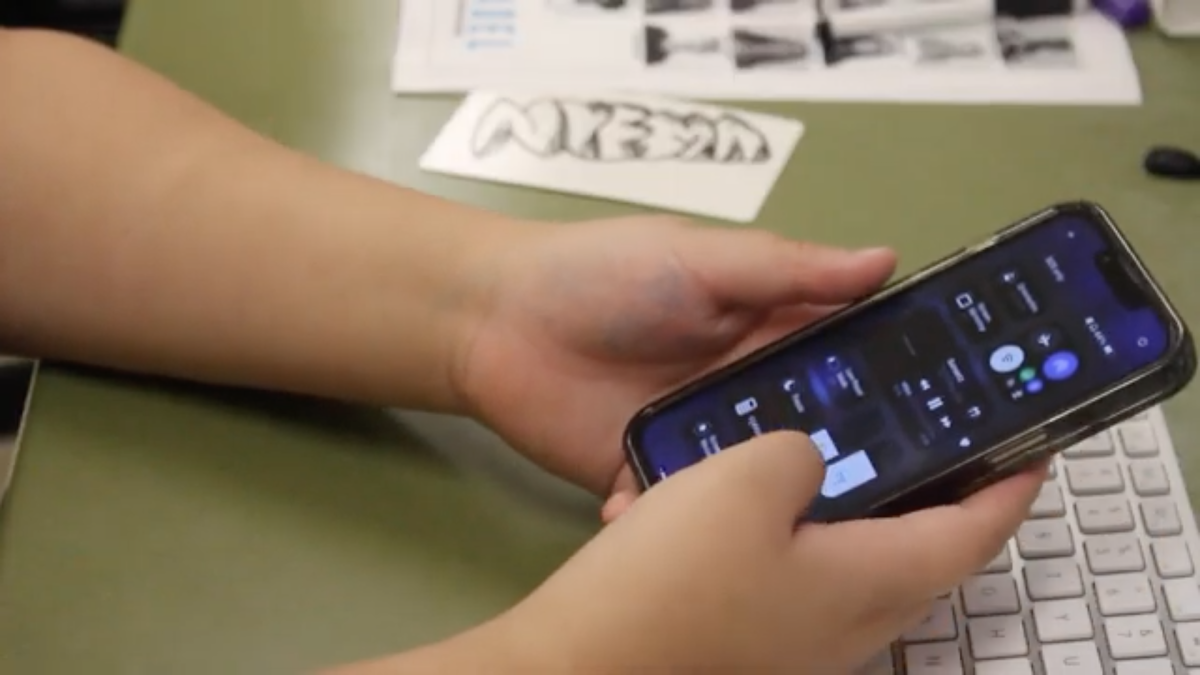by Chloe Jordan | staff writer
As an American Sign Language teacher and member of the deaf community, one of Brett Koch’s jobs is to teach students to respect deaf culture and to have deaf etiquette. If you are a hearing person, there are a few simple steps you can take to create an accepting and comfortable atmosphere for deaf people.
“The deaf community understands people typically have little to no exposure to deaf community, so honest mistakes are usually forgiven,” Koch said. “It is best to be cautious as improper etiquette can be a personal issue for the deaf individuals.”
Raising your voice or screaming at a deaf individual when trying to communicate is considered extremely rude.
“One of the worst etiquettes I had, unfortunately, was related to a temporary summer job I once held. I had a coworker scream at me if I am deaf and have I heard him,” Koch said. “Just make sure the person can see you and do not be afraid to ask if they’re deaf, without the screaming part.”
Turning or walking away can make it difficult for deaf individuals to lip read and have a conversation.
“Another one of the frustrating bad etiquette is oftentimes, due to the fact I can hear a little, when people need to talk to me, they walk away while talking,” Koch said. “Ideally, it is best to stop and make sure the person can see your lips and be able to read your face.”
Deaf etiquette in the workplace is especially important and is key to staying professional.
“Lack of deaf etiquette in a workplace can lead not only to problems in creating a productive workplace, but it can also potentially lead to a discriminative workplace,” Koch said. “The outcome of such a workplace can result in a lawsuit.”
Watching an interpreter instead of the deaf individual can make them feel excluded.
“One example of what not to do in a workplace is if there is an interpreter present, do pay attention to the deaf person and not the interpreter,” Koch said. “Doing so will keep the deaf individual feel a part of the group as opposed to being a third wheel.”
Deaf people’s health and emotions are valid.
“Often, the individual is left out of their family conversation, usually with ‘I’ll tell you later’ or ‘Never mind, it is not important.’ Typically, deaf people face that in their daily lives, which is usually frustrating and can be very draining of their mental and emotional health,” Koch said.
Every deaf individual has their own way of communicating that they are comfortable with, which should be respected.
“However, intentional improper etiquette can cause the individual to lose the support and even become outcast among the deaf community,” Koch said. “One real life example that comes to mind is a professional career as an interpreter. If a professional interpreter asks a deaf individual if they can talk instead of signing at a job-related meeting, that can quickly cost you your career because the trust is lost. That is something to avoid as the deaf community needs more sign language interpreters.”
Giving unnecessary help can ostracize deaf people and create a weird atmosphere.
“Deaf people also value their independence,” Koch said. “Another real-life example would be going out to eat with a deaf friend. If you happen to go out with a deaf friend, do not order their food for them unless asked. Not only can that be considered as taking away their independence, it is very embarrassing for them.”
Some deaf people can read lips well, and others prefer to talk only in sign language.
“There are misconceptions that deaf people can read lips well. This often led hearing people to speak fast or speak really slow as if the deaf individual may be unintelligent,” Koch said.
It’s okay to walk through deaf people signing, except when it’s an important conversation.
“Another amusing situation I have seen is when there are two deaf people signs in the middle of a hallway or sidewalk, people often-time walk around or turn back to go another way. It is perfectly acceptable for people to go through between two deaf people signing,” Koch said. “However, it can be extremely uncomfortable when it comes to a prominent issue, such as medical situations, as the deaf person may miss a small but important detail.”
Wild gestures and confusing hand signals aren’t effective forms of communication.
“I had an awkward yet amusing situation with a customer a few years ago where he, quite literally, started flailing his arms in an attempt at communicating,” Koch said. “I am glad he was willing to try but that is not ideal, as it is considered unacceptable.”
Hearing individuals may not understand signing, but staring is unacceptable.
“The reaction I would like to see when hearing people see deaf people signing is ‘Wow…that’s the greatest thing I’ve ever seen.’ Usually, when hearing people do not understand deaf people are signing, they tend to stare at them,” Koch said. “This can be awkward and annoying as it can feel like people are trying to eavesdrop on our conversation.”
So, what can you do to have good deaf etiquette?
“While the flow may feel unnatural, writing in a notebook or cellphone, and learning some signs can be a great deal for the deaf individual and over time, it will become a more natural part of the conversation,” Koch said.
Putting in some effort and trying your best to understand a deaf individual’s point of view can do wonders for conversations with deaf people.
“One of the best etiquettes I have encountered is very recent,” Koch said. “One of the coffee shops I like to visit, the workers there tried to learn some basic signs to help me communicate better when placing my order. That made me feel welcome and made me want to come back to their business.”
Using sign language to the best of your abilities can strengthen trust in and bonds with deaf people.
“An example: socially, if there is a deaf person present, if you know sign languages, you are expected to use sign languages whether you are a native user or a beginner, it is to help establish respect for their culture and language,” Koch said. “Showing that respect will create a bond and trust between the two parties. It also helps reduce awkwardness and the feeling of being out-of-place. Also, if you do not understand what the deaf person is saying, just asks again and they are more willing to repeat themselves.”
Efforts working towards inclusion and good communication allow both hearing and deaf people to feel comfortable.
“Deaf etiquette is primarily related to communication, both in their personal lives and their professional lives,” Koch said. “It is to create inclusion for all parties involved in social and work-related situations.”








